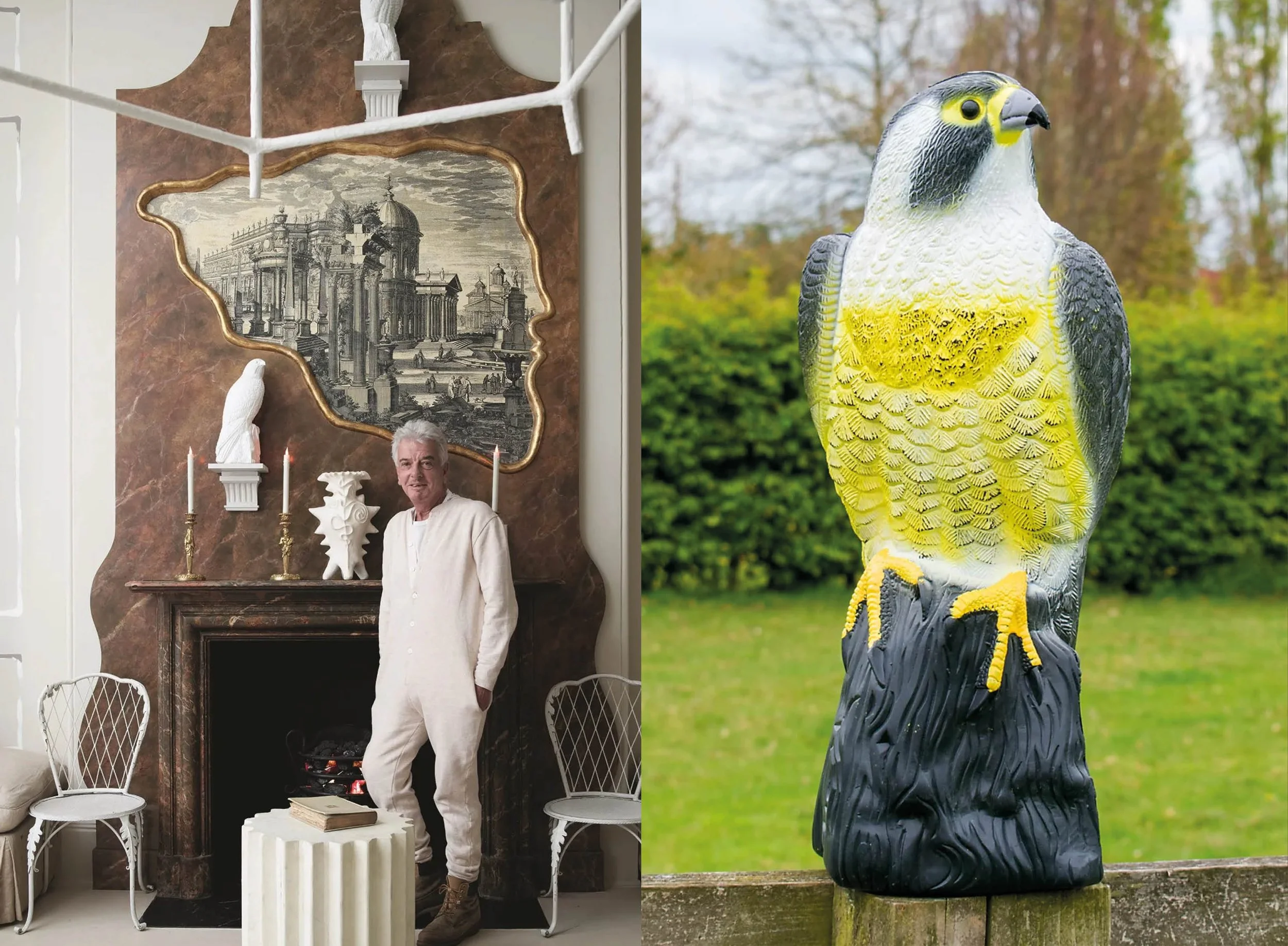Decoy Bird or Decoy Design?!
📸 Left photo by Simon Upton of Nicky Haslam for House & Garden, 2020
📸 Right photo from B&Q: KCT Decoy Hawk Bird of Prey Scarer, 2025
I started doing Beata Heuman's Interior Design course on BBC Maestro a few weeks ago, and last week I loved this discovery . . .
Nicky Haslam, a prolific UK interior designer and socialite, has a plastic bird scarer from B&Q (think Home Depot) that he spray-painted white. Most people who see it in his home assume it’s an 18th-century porcelain statue.
This lives in my head rent-free, and I'm not mad about it.
There’s a larger commentary here on how reputation affects value, context shapes perception and the irony of it all.
A few of my takeaways are:
🦉 Context is everything
🦉 Always keep a sense of humour, no matter how successful you get
🦉 The joy of f*cking with people will never get old
🦉 Good taste ≠ big money
What are your takeaways?
Article FAQs generated by AI:
1. What does this anecdote about Nicky Haslam reveal about the relationship between context and perceived value in design?
This story highlights how context can dramatically alter the way we perceive an object’s worth or meaning. The same plastic bird scarer, when placed in a well-styled, high-status home, is interpreted as a refined antique. This reveals that value is not intrinsic to the object itself, but created through narrative, reputation, and surroundings. In design (and culture at large), perception is often shaped more by curation and context than by material cost or origin.
2. How does this post challenge traditional definitions of “good taste” or design authenticity?
The post suggests that “good taste” is not about expensive items or rigid rules, but about creativity, humour, and intentionality. By presenting a mass-produced plastic item as a highbrow art piece, Haslam subverts elitist ideas of design and shows that playfulness, irony, and personality can be just as impactful as authenticity or pedigree. It invites us to question how much of what we admire is based on what we’re told is “tasteful,” rather than what actually resonates with us.
3. What broader commentary does the post make about status, artifice, and play in the world of interiors or social identity?
The post critiques the often-unspoken dynamics of status performance and cultural gatekeeping. It celebrates a moment where the lines between fake and real, high and low, are blurred—revealing that much of what we consider tasteful or elite is a constructed illusion. The humour in “f*cking with people” becomes a disarming tool that exposes the artifice of taste and invites more inclusive, rebellious, or democratic forms of expression—especially in creative fields like interior design.
